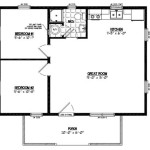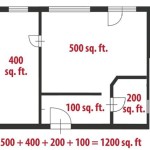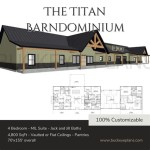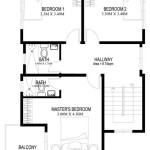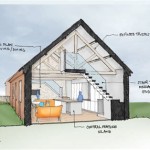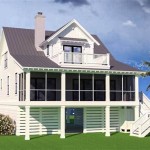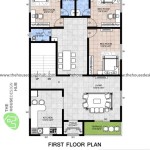Plans For Building A Bluebird Box Birdsboro Pa
Birdsboro, Pennsylvania, situated in the heart of bluebird country, provides an ideal environment for these vibrant birds. The presence of suitable habitat and a growing awareness of bluebird conservation has led to increased interest in providing nesting boxes. This article details plans for constructing a bluebird box specifically tailored for the Birdsboro, PA region, emphasizing design considerations, material selection, and optimal placement for attracting and supporting a thriving bluebird population. These plans aim to provide a practical guide for individuals and organizations seeking to contribute to local bluebird conservation efforts. The information will cover aspects essential for successful bluebird nesting in this specific geographic area, taking into account local climate and predator considerations.
The Eastern Bluebird (Sialia sialis) faces challenges primarily due to habitat loss and competition for nesting cavities with introduced species like the House Sparrow and European Starling. Providing properly constructed and strategically placed nesting boxes plays a crucial role in mitigating these challenges. Bluebirds prefer open woodland areas, fields, and meadows with scattered trees and low ground cover, common landscapes in and around Birdsboro. These habitats offer ideal foraging opportunities, as bluebirds primarily feed on insects found in these environments. Nesting boxes supplement natural cavities, which have become increasingly scarce due to land development and the removal of dead trees. Consequently, a well-constructed nesting box can significantly improve bluebird nesting success.
Understanding Bluebird Box Design Considerations
Bluebird box design is crucial for attracting bluebirds and ensuring their safety. Several key aspects must be considered to create a suitable nesting environment. The dimensions of the box, the entrance hole size, ventilation, drainage, and predator protection are all critical factors influencing bluebird occupancy and nesting success. Furthermore, selecting appropriate materials and construction techniques ensures the box's durability and longevity, providing a reliable nesting site for years to come. A poorly designed box may attract undesired species or even pose a danger to nesting bluebirds and their offspring.
The internal dimensions of a bluebird box should be approximately 5 inches by 5 inches. This size provides adequate space for a bluebird family without being overly large, which could potentially attract larger, competitive species. The depth of the box, from the floor to the bottom of the entrance hole, should be around 6 to 8 inches. This depth allows the bluebirds to build a substantial nest and provides some protection for the eggs and young from predators and inclement weather. The roof should extend over the front of the box to provide further protection from rain and direct sunlight. A slightly sloping roof aids in water runoff.
The entrance hole size is perhaps one of the most critical design elements. A 1 1/2-inch diameter entrance hole is ideal for bluebirds. This size effectively prevents larger birds like starlings from entering the box, while still allowing bluebirds easy access. A smaller hole might restrict bluebird entry, while a larger hole would open the box to unwanted competitors. The entrance hole should be located approximately 2 inches below the roof. This placement provides a small ledge for the parents to perch on while entering and exiting the box.
Proper ventilation and drainage are essential for maintaining a healthy nest environment. Ventilation holes, typically 1/4-inch in diameter, should be drilled near the top of the box to allow for air circulation. This ventilation helps to prevent overheating inside the box, particularly during hot summer days. Drainage holes, also 1/4-inch in diameter, should be drilled in the floor of the box to allow water to escape. These holes prevent the build-up of moisture inside the box, which can lead to mold growth and other problems that can harm the nestlings.
Predator protection is an important consideration, especially in areas with high predator activity. Various methods can be employed to deter predators from accessing the nesting box. A conical or cylindrical predator guard placed below the box can prevent climbing predators like raccoons and snakes from reaching the entrance hole. The box can also be mounted on a smooth metal pole to further impede climbing predators. Furthermore, avoiding the use of perches below the entrance hole can deter House Sparrows, which often use perches to harass nesting bluebirds.
Material Selection and Construction Techniques
The choice of materials and construction techniques significantly impacts the durability and longevity of the bluebird box. Natural, untreated wood is the preferred material, as it provides a safe and comfortable nesting environment for bluebirds. Avoid using pressure-treated wood or wood treated with chemical preservatives, as these substances can be harmful to the birds. Cedar and redwood are excellent choices due to their natural resistance to rot and insects. Pine is also a suitable option, but it may require more frequent maintenance.
When cutting the wood pieces for the box, precise measurements are critical. Accurate cuts ensure that the box is properly assembled and that there are no gaps or openings that could allow rain or predators to enter. Use a saw to cut the wood pieces according to the dimensions specified in the bluebird box plans. Ensure all pieces are smooth to prevent injuries to the birds and people handling the box.
Assembly of the bluebird box should be done using screws rather than nails. Screws provide a more secure and durable connection, preventing the box from falling apart over time. Use exterior-grade screws that are resistant to rust and corrosion. Pre-drilling holes before inserting the screws helps to prevent the wood from splitting. Ensure all screws are countersunk so that they are flush with the surface of the wood.
The roof of the bluebird box should be hinged or removable to allow for easy monitoring and cleaning. A hinged roof can be secured with screws or a latch. A removable roof can be held in place with screws or by sliding it into grooves cut into the sides of the box. Regular monitoring and cleaning of the box are essential for maintaining a healthy nesting environment and removing old nests or debris. Cleaning out the box after each nesting season helps to prevent the build-up of parasites and ensures that the box is ready for the next breeding season.
Painting or staining the exterior of the bluebird box is generally not recommended. However, if aesthetics are a concern, use a light-colored, non-toxic paint or stain. Dark colors can cause the box to overheat in direct sunlight. Avoid painting the interior of the box, as the paint fumes can be harmful to the birds. If painting the exterior, allow the paint to dry completely and off-gas before installing the box.
Optimal Placement and Maintenance in Birdsboro, PA
The success of a bluebird box depends not only on its design and construction but also on its placement and maintenance. Selecting the right location for the box and implementing a regular maintenance schedule are crucial for attracting bluebirds and ensuring their nesting success. The Birdsboro area offers a variety of suitable habitats for bluebird nesting, but careful consideration must be given to specific site factors.
Bluebird boxes should be placed in open areas with scattered trees or shrubs. Avoid placing the box in dense woodlands or areas with heavy vegetation, as these habitats are less attractive to bluebirds. Fields, meadows, pastures, and golf courses are all suitable locations. The box should be mounted on a post or pole, ideally facing away from prevailing winds. In Birdsboro, PA, this typically means facing away from the northwest. The height of the box should be approximately 5 to 6 feet above the ground. This height provides some protection from predators while still allowing bluebirds easy access.
Monitor the bluebird box regularly, especially during the nesting season. Check the box at least once a week to observe nesting activity and to identify any potential problems. Remove any House Sparrow nests immediately, as these birds are aggressive competitors and can harm bluebirds. Observe the bluebirds from a distance to avoid disturbing them. Use binoculars if necessary to observe nesting activity without getting too close to the box.
Clean out the bluebird box after each nesting season. Remove the old nest and any debris from the box. This helps to prevent the build-up of parasites and ensures that the box is ready for the next breeding season. Cleaning the box in the late fall or early winter is ideal, as this gives the box time to air out before the next nesting season. Use a scraper or brush to remove any dried mud or debris from the inside of the box.
Repair any damage to the bluebird box promptly. Check the box regularly for signs of damage, such as cracks, holes, or loose screws. Repair any damage immediately to prevent further deterioration and to ensure that the box remains a safe and secure nesting site. Replace any damaged parts as needed. With proper care and maintenance, a well-constructed bluebird box can provide a valuable nesting site for bluebirds for many years to come.
Consider establishing a bluebird trail in the Birdsboro area. A bluebird trail is a series of bluebird boxes placed in suitable habitats along a designated route. Establishing a bluebird trail can significantly increase the local bluebird population and provide valuable opportunities for monitoring and research. Coordinate with local landowners and organizations to identify suitable locations for bluebird boxes and to obtain permission to install and maintain the boxes.
Educate others about bluebird conservation. Share your knowledge about bluebirds and their habitat requirements with others in the Birdsboro community. Encourage others to build and install bluebird boxes and to participate in bluebird monitoring and conservation efforts. By working together, the community can make a significant contribution to the conservation of these beautiful and beneficial birds.

How To Build A Bluebird Nest Box Audubon

The Wildlife Garden Build Nest Boxes For Wild Birds Osu Extension Service

How To Make A Diy Bluebird House Birds And Blooms

Time To Ready Bluebird Nesting Boxes

Owl House Plans Build Your Dream Bird

Avian Architecture Audubon Pennsylvania

Bluebird House Dimensions Hole Size Placement Material Types

Phillip Baskin Purchasing Agent Globus Medical Linkedin

Avian Architecture Audubon Pennsylvania

How To Make A Diy Bluebird House Birds And Blooms
Related Posts


